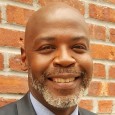Here I was, about to start a conversation with a room full of seniors. They ranged in age from 60 to late 80s. It was right before their lunch hour, and if anyone knows anything about seniors, it’s: Whatever you do, don’t interrupt their lunch session or delay it. And usually they don’t care for lectures, but the one I was delivering today had their attention. I was speaking to them about sex. In particular, we were discussing HIV.
“Who is still actively having sex,” I asked the room. Nearly most of the room raised their hands. Including those men and women who were in their 70s and 80s. I followed up my question with another. “To those who raised their hands, who knows their HIV status?” This time only three people raised their hands.
Although this was a very small non-scientific sampling, it represents HIV prevention as it relates to seniors. In this example, many are having sex and many are also unaware of their HIV status.
Why?
There can be several reasons for this, which was highlighted in my previous blog in which it was pointed out how the medical community and HIV prevention organizations are not doing enough to provide prevention to older adults.
These entities must overcome their misconstrued perception of sexually active seniors, and find ways to broaden their reach in order to include those over 60. Below are several ways each can provide prevention to our older community.
Medical Providers
- Make talking about sex a part of your health discussion with your senior patients. From this you’ll be able to gauge their level of risk and provide any needed preventions.
- Temper visible reactions when seniors do share their sex lives. It might be shocking to hear someone in their 80s talk about their sex activity, but this is the time to be professional. Visible signs of comfort with the topic will probably prevent future sharing. Simply be open.
- Provide the same prevention you offer to those younger. This includes information about PrEP, access to condoms and testing.
- Make a commitment to ask your senior patients whether they want an HIV or any STD test. Knowing their sexual history is the first step. If they are active, let them know about testing options.
- If a senior is ill for an reason unknown or has an unexplained condition, discussing HIV is imperative as you want to rule it out of your diagnoses.
- Basic rule: Simply don’t assume someone over a certain age is not having sex.
HIV Prevention Organizations
- Get over any ageism that
exist within your organization. This reason alone blocks efforts to combat HIV in the older population. - Make a commitment to serve the senior population. This includes recognizing whether senior voices are absent
at your physical space and within your mission. If it’s missing, determine if it’s intentional and what has to change to bring seniors to the table. - Speak against funders who only target the young and make them aware that your efforts should also include seniors.
- Expand your outreach. Think outside the box and provide presentations to senior organizations and establishments the elders may frequent.
- Place older adult images on your outreach marketing material.
- Realize that the older generation grew up when HIV was just being discovered, so they may not have the knowledge of how HIV is looked at today along with how it is tested and treated.
- Get over any ageism. This needs to be repeated!
Hopefully this will encourage these fields to expand their reasoning to provide much-needed HIV services to seniors. Recognize the gap that exists and determine if you can be the change agent that can fill that growing gap and make a difference.
Lastly, understand that this is about lives that can be saved and/or people who can be assured that if they test positive they can have a quality of life equal to their younger counterparts.
My next blog will speak to seniors themselves and provide ways they can advocate for themselves when it comes to HIV prevention and testing.
Did I miss anything? Please share.








1 Comment
1 Comment